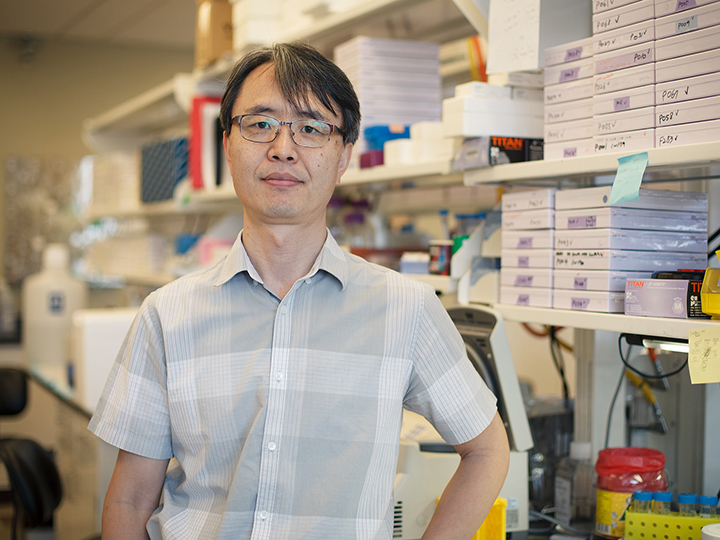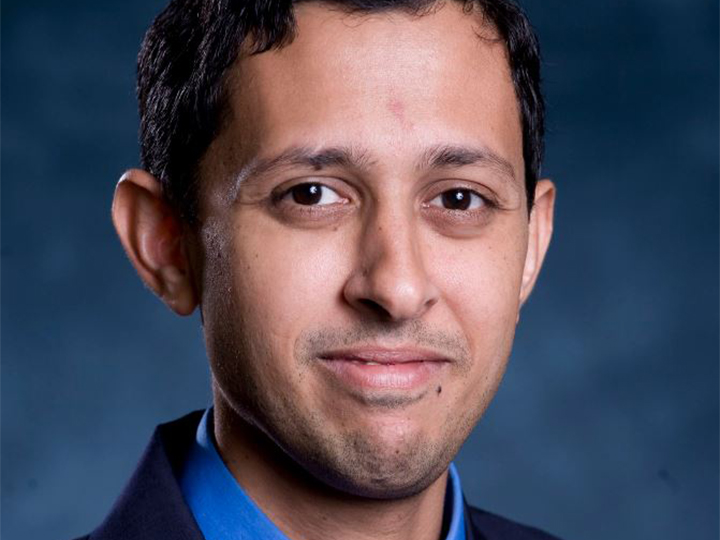

Two University of Houston researchers, working to find cancer cures, received grants from the Cancer Prevention & Research Institute of Texas (CPRIT), the organization that funds groundbreaking cancer research and prevention programs in the state.
CPRIT awarded $1,173,420 to Navin Varadarajan, associate professor of chemical and biomolecular engineering, to improve effectiveness of T-cell immunotherapy and $811,617 to Sanghyuk Chung, associate professor of biology and biochemistry, to define molecular targets for the treatment of cervical cancer.
Sanghyuk Chung, Cervical Cancer
Although cervical cancer is the fourth leading cause of cancer death in women worldwide, there has been little progress in the treatment of it over the past decade.
Chung is set to change that as he uses his CPRIT award to delve into a little-researched topic – the role of estrogen in the development of cervical cancer.
“It is clearly demonstrated that human papillomavirus (HPV) is required for the development of cervical cancer, but evidence indicates that other co-factors are required for cervical cancer,” said Chung.
Suspect number one, he said, is estrogen, the main female hormone known to cause breast cancer.
“It has been reported that our models that are genetically engineered to express HPV genes develop cancer when treated with estrogen,” said Chung, leading him to believe the role of estrogen and estrogen receptor alpha is significant.
In particular, Chung is examining stromal cells, those that surround the cancer cells and form a micro environment for them. Preliminary results suggest that estrogen receptor alpha expressed in stromal cells rather than cancer cells is required for the genesis and growth of cervical cancer.
“Estrogen receptor alpha in the stromal cells activate multiple molecular pathways and we want to find which pathway is responsible for growth of the cancer cells. If we find it, we can inhibit that pathway,” said Chung.
If he can block the pathway then he will have found the way to treat patients and create the first targeted therapy for cervical cancer.
“I believe it will help a lot of women worldwide,” said Chung. That’s his goal and he adds that it might not happen without CPRIT.
“We are so lucky in Texas. No other state has a public program like CPRIT that supports cancer research and attracts prominent cancer researchers to do this kind of meaningful work.”
Navin Varadarajan, T cells
Varadarajan will use his grant to bring consistent results to cancer patients undergoing T-cell immunotherapy by manufacturing programmed T cells to meet, recognize and destroy tumors.
That’s what the immune systems’ T cells are for; by nature they fight invaders or infections.
And scientists have strengthened them to be even better warriors by taking them from a patient and injecting them with proteins (called receptors) that enable the T cells to recognize and attack every tumor cell they encounter. Despite the breakthrough this represents in the treatment of cancer, attaining predictable outcomes in patients is elusive - some patients respond to the T-cell therapy and some do not.
This is Varadarajan’s second CPRIT grant; he will use it to improve patient outcomes in T-cell therapy and is studying clinical T-cell samples being used for treatment of patients at The University of Texas M.D. Anderson Cancer Center from two groups – those whose tumors regressed after treatment and those whose tumors were unaffected.
“We have to understand every single T cell and what each one is capable of,” said Varadarajan, who is looking for the perfect cell composition in order to manufacture only the ones that cure tumors.
“Once we know what is required to get a positive response, we can control the composition of the cells so that they all can work to fight cancer,” he said.
This work will directly utilize an innovative suite of proprietary tools developed by the Varadarajan lab during the first period of CPRIT funding. The tools deliver real-time profiling of T cells with a video component that almost looks like a video game, in which you watch T cells devour tumors in real time. You can watch that here.
After T cells are injected with receptors, they undergo a rapid expansion process where scientists add cytokines, or small proteins, to manufacture about 1 billion cells from 1 million. It is during this phase that Varadarajan can manipulate the cells and create those that will recognize tumors consistently. He says that studying what makes better T cells will guide the development of the next generation of genetically modified cells, and all of immunotherapy in general, though he readily admits that working with T cells can be daunting.
“The big challenge with T cells is that there isn’t one single thing that can be used to define what a T cell is supposed to do. Because it’s a living cell, it’s capable of so many different things but studying them at the single-cell level allows us to map all of these different things onto the same cell.”
Cover photo: GettyImages